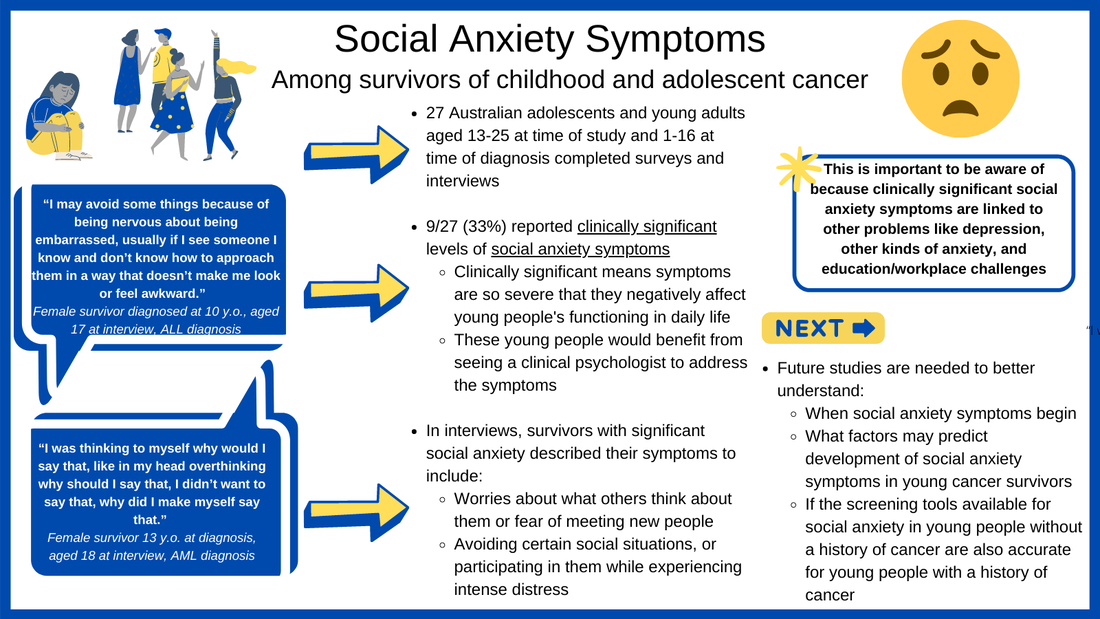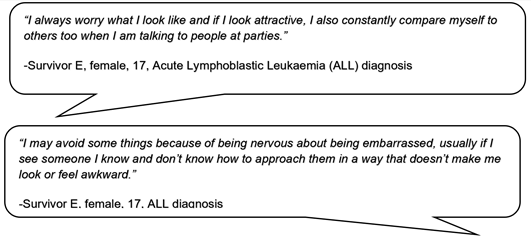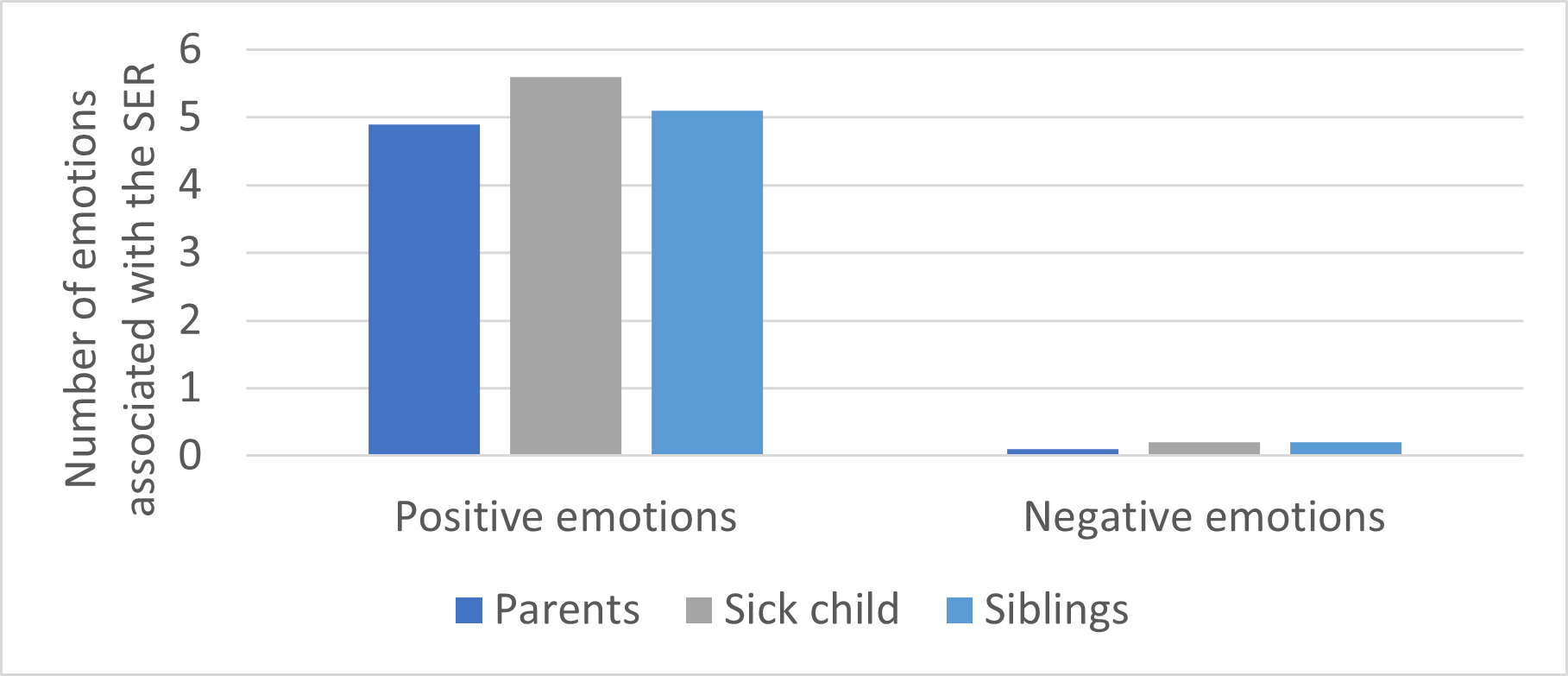When children or teenagers are diagnosed with cancer, they may experience challenges like social isolation while stuck at home or in hospital, feeling “different” because of physical appearance changes like hair loss, or being excluded from social activities. Two previous research studies from more than 15 years ago also showed that young people with a history of cancer may also experience serious symptoms of social anxiety, which is usually described as the significant fear of certain social situations, in which young people experience distressing worry about how others perceive them. For someone experiencing serious social anxiety, meeting new people, attending a busy social event, or presenting in class can be really difficult things to do. Yet, these are all behaviours that are key to young people having active, normal and meaningful social lives, and thriving as they mature into adulthood.
Around 5-13% of young people in the general population (without a history of cancer) experience such serious levels of social anxiety symptoms that they have been diagnosed with Social Anxiety Disorder. This is a mental health disorder where fear of meeting new people or participating in certain social activities is so severe that young people become very distressed and often decide to avoid certain kinds of social activities all together. Individuals with Social Anxiety Disorder need treatment from a clinical psychologist. No recent studies have tried to understand how common serious symptoms of social anxiety may be among young people with a history of cancer. We also do not know from previous studies what impact social anxiety symptoms might have on the daily life of young people with a history of cancer.
We conducted a research study to understand:
- The proportion of Australian survivors of childhood and adolescent cancer who experience serious symptoms of social anxiety (suggesting they might have Social Anxiety Disorder)
- How survivors describe the impact of these symptoms on their daily life
Findings
We asked 57 survivors of childhood or adolescent cancer who were currently between the ages of 13-25 to participate. We invited them to complete one survey and one interview. Surveys were completed by 27/57 survivors, who were between 1-16 years old at their time of diagnosis.
We found that 9/27 survivors (33%) experienced ‘clinically significant’ symptoms of social anxiety. This means the symptoms were so serious that they negatively affected young people’s functioning in daily life and signaled that young people might have Social Anxiety Disorder. In interviews, these survivors described how social anxiety caused them to have thoughts of worry and fear during social interactions, which led to behaviours like avoidance.
We need to make sure that we pick up and treat social anxiety symptoms among young people with a history of cancer. When these symptoms are left untreated, they can last for 10 years or more, or get worse over time. Social anxiety symptoms are also linked to other social and emotional concerns, like depression, other forms of anxiety, and education or workplace challenges. Our findings suggest young people diagnosed with cancer may be at risk of serious social anxiety symptoms, so it is important for researchers and clinicians to work together to find ways to better assess and address these symptoms.
To do this well, there are many questions that still need answering. We do not know if tools used to assess social anxiety symptoms in young people without a history of cancer give us a good picture of these symptoms and the unique ways they might occur among young people with a history of cancer. We also do not know when social anxiety symptoms may begin after a cancer diagnosis, or if there are certain factors that might predict which young people with cancer may develop more serious social anxiety symptoms over time. Our team is working on studies to answer these questions. We hope this will help us to better protect and promote positive mental health and healthy social functioning among young people diagnosed with cancer.
This paper was published in the Journal of Adolescent and Young Adult Oncology.
You can read the full paper here.




 RSS Feed
RSS Feed